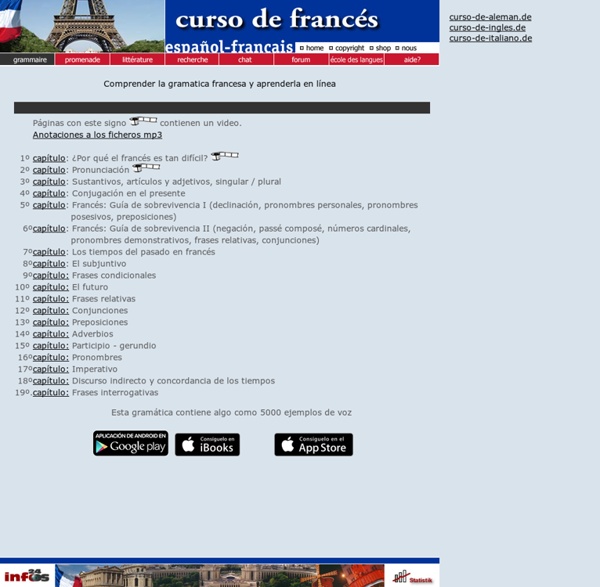Aprender francés en línea manual de gramática francesa online gratuito

Les activités quotidiennes
Se réveiller – JE ME RÉVEILLE. Se lever – JE ME LÈVE. Se laver – JE ME LAVE. Prendre une douche – JE PRENDS UNE DOUCHE. S’habiller – JE M’HABILLE. Prendre le petit-déjeuner – JE PRENDS MON PETIT-DÉJEUNER. Aller à l’école – JE VAIS À L’ÉCOLE. Déjeuner à la cantine – JE DÉJEUNE À LA CANTINE. Rentrer à la maison – JE RENTRE À LA MAISON. Faire les devoirs – JE FAIS MES DEVOIRS. Prendre le goûter – JE PRENDS LE GOÛTER. Étudier – J’ÉTUDIE. Aider maman – J’AIDE MA MÈRE. Mettre la table – JE METS LA TABLE. Dîner en famille – JE DÎNE EN FAMILLE.Se coucher - JE ME COUCHE:.
French Language Course Pages
Created by Jacques Léon Page design by Roberth Andersson Presentation... My name is Jacques Léon and I will be your instructor of basic French for this Web course. Though I am presently living in Paris, France. I have been impressed by the Spanish and the Italian Web courses and wondered why The French language was absent. Objectives... The following French course is intended to allow you to understand written French (newspapers, articles, magazines, signs on the road during your next trip in France, etc.) and to write a letter to a French friend or correspondent. In the first five lessons, I will especially focus on the grammatical aspects of the French language in order to be able to go into conversations rapidly. One of my favorite past-time is writting. Course Index For French addicts...
French Level One : Talk about your favorite pastimes and after-school activities
Pierre regarde la télé. Tu joues au basket ? Nous étudions ensemble. Chantal et moi, nous chantons ensemble. Je parle avec mes amis. Jacques surfe sur Internet.
Mentes Inquietas - Un sitio no apto para mentes estáticas
Related:
Related:



